What’s in a Pocket Part Two: Turning Workwear Shirt Pockets Inside Out
In my last article, I discussed the evolution of the five pockets in the five-pocket jean. As I noted in that article, menswear garments started to feature built-in pockets in the seventeenth century. While these pockets spread to include nearly every available space on jackets, waistcoats, and trousers, the shirt would not be graced with pockets until much later.
In my last article, I discussed the evolution of the five pockets in the five-pocket jean. As I noted in that article, menswear garments started to feature built-in pockets in the seventeenth century. While these pockets spread to include nearly every available space on jackets, waistcoats, and trousers, the shirt would not be graced with pockets until much later. Shirt pockets were late to the party because of how the shirt fit into menswear at the time. Since men always wore a jacket and often a waistcoat as well, the collared shirt was essentially an undergarment. A man in his “shirtsleeves” was seen as partially (and in some contexts scandalously) undressed. For professionals and members of the leisure class, this would remain the case until the 1960s, when men started to feel more comfortable removing their jackets in public or discarding the jacket entirely.
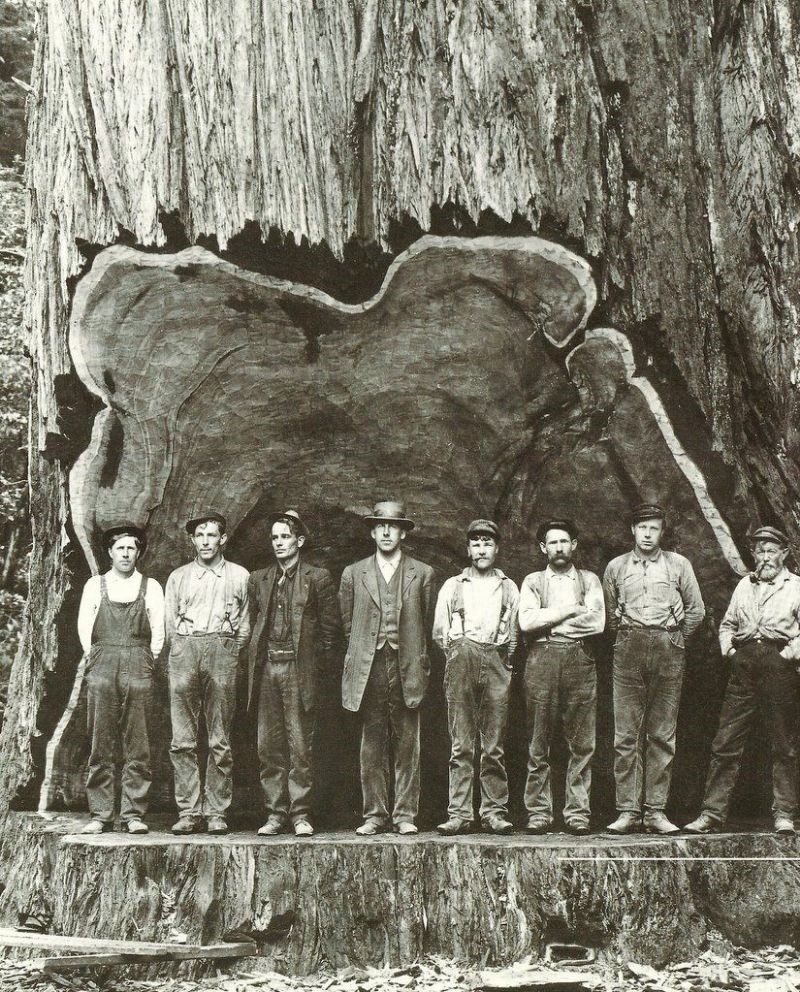
Among hard working men, though, the jacket and waistcoat began to lose some of their essential status much earlier. In the nineteenth century, chambray and flannel workshirts took center stage. The handy pockets that had formerly appeared on jacket and waistcoats began to migrate to the front of their workshirts. Since then, the chest pocket has become a defining characteristic of casual button-up shirts, but there’s a wide difference in pocket styles, and a subtle change at the breast pocket can change an outfit’s entire vibe. Once we learn how to read the signs, it becomes clearer why shirts with certain pocket styles work better with some looks than others. Let’s look at eight different pocket styles and what they tell us about the shirts we find them on.
Open Patch Pocket
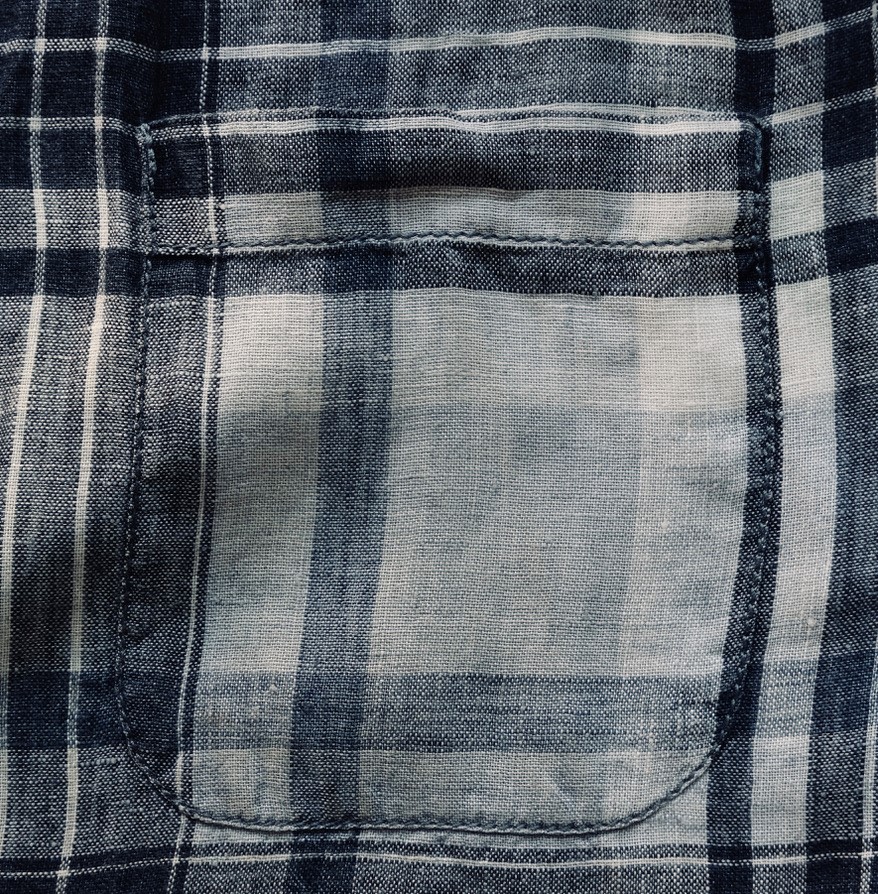
On jackets, the open patch pocket is a common feature on heritage workwear pieces like Type I denim jackets and chore coats. On shirts, though, the simplest form of pocket is also the dressiest form of the chest pocket. The patch pocket is designed to be nearly invisible. If the shirt has a pattern, the pattern on the pocket should line up perfectly with the pattern beneath it. Unless it is reinforced at the corners, the open patch pocket is prone to tearing, making it the least durable of the pocket styles.
Button-Closure Patch Pocket
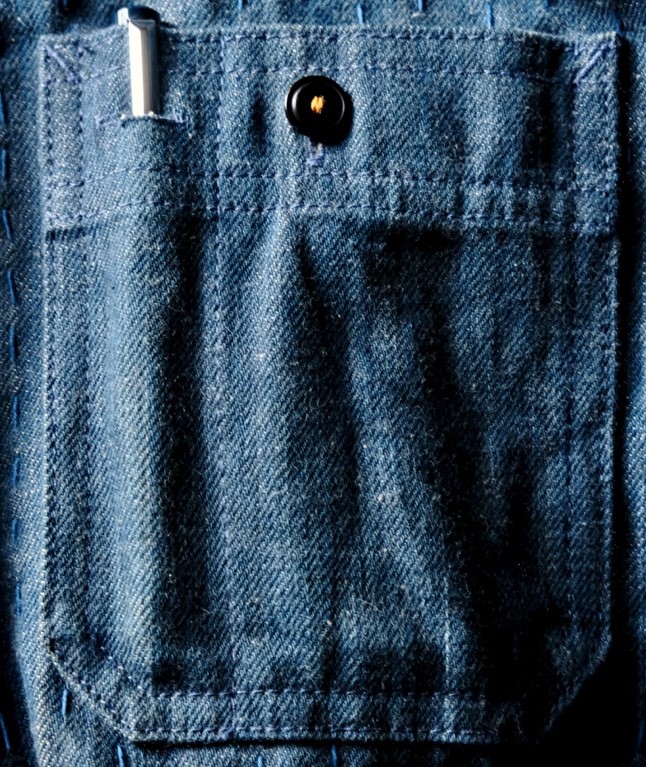
With the simple addition of a tiny fastener, shirts featuring the buttonable patch pocket move further into casual and workwear territory. Often found on chambray and denim workshirts, occasionally with the added detail of a pen or pencil slot like the one pictured above, the button-closure patch pocket can add a nostalgic touch to otherwise modern pieces.
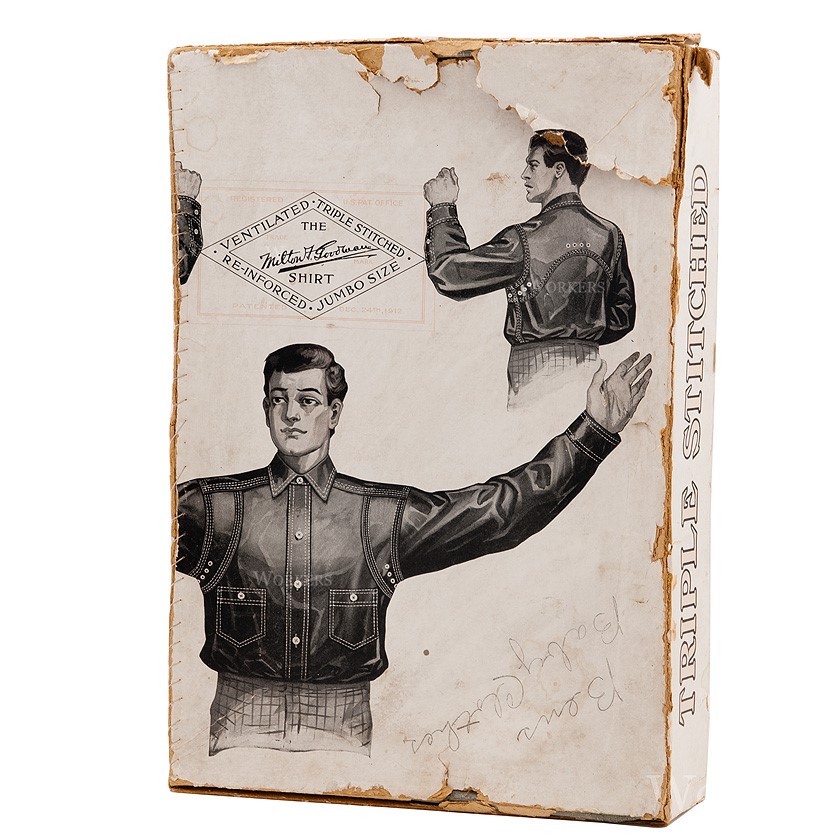
**Picture from The Rite Stuff** In the early part of the twentieth century, pockets like this sat much lower on the shirt—closer to the stomach than the chest. This would have made them easier to access while working, but designers quickly saw that the pockets look much better higher up on the body. They migrated up the torso as the century progressed, settling on the chest by around the middle of the century.
Button-Down Flap Pocket
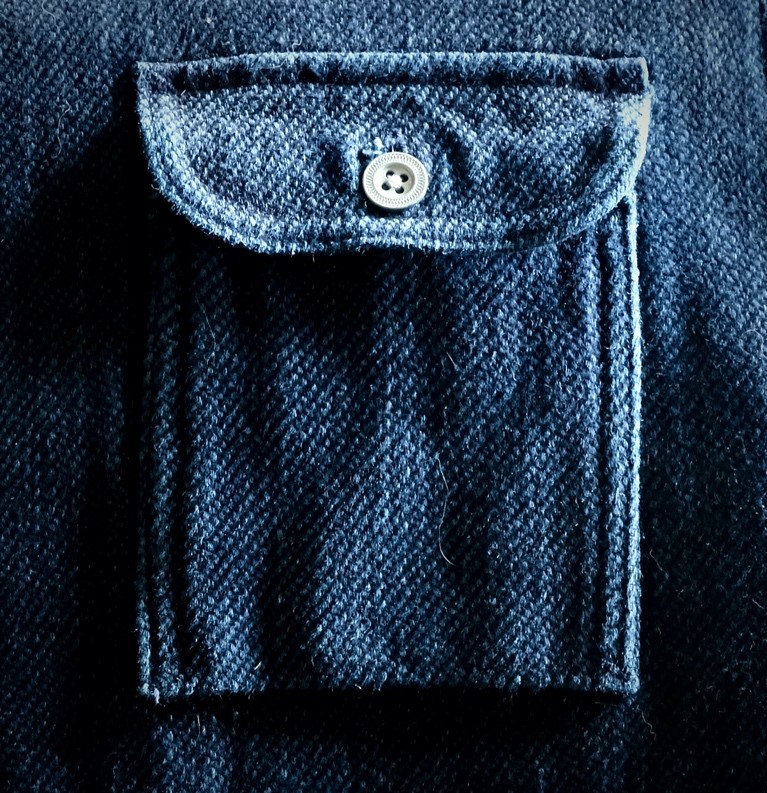
More secure than the open or button-closed patch pocket, the button-down flap pocket is perfect for those who (like soldiers) want the ability to crawl on their bellies without leaving a trail of their pocket contents behind them. Snaps can also be used, but they are more likely to open when you least want them to. The button-down style initially found favour when militaries began making their uniforms more utilitarian in the nineteenth century.
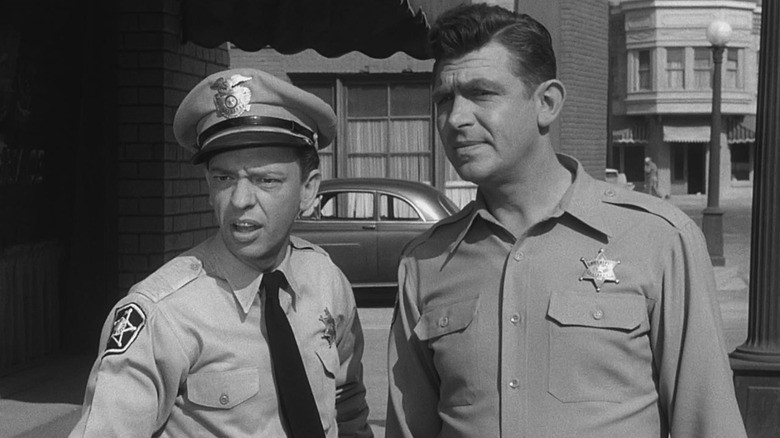
The button-down flap pocket is the durable and stylish solution for those who want a no-nonsense, ready-for-anything shirt. Flaps can be either rounded, rectangular, or with straight cut corners. When epaulets are added at the shoulders, as above, the resulting shirt pairs perfectly with a tin star.
Western Snap-Down Flap Pocket
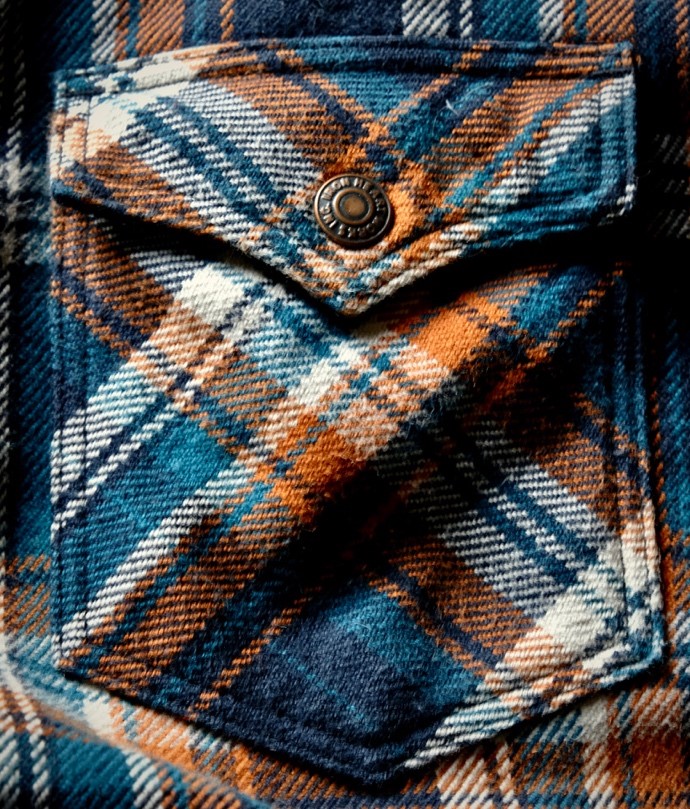
The pointed pocket flap does not necessarily mean that you’re looking at a western shirt, but it’s a good sign that you’re on that western trail. There are plenty of pointed pocket flaps on military uniforms and workwear shirts. It is just one tell-tale sign.
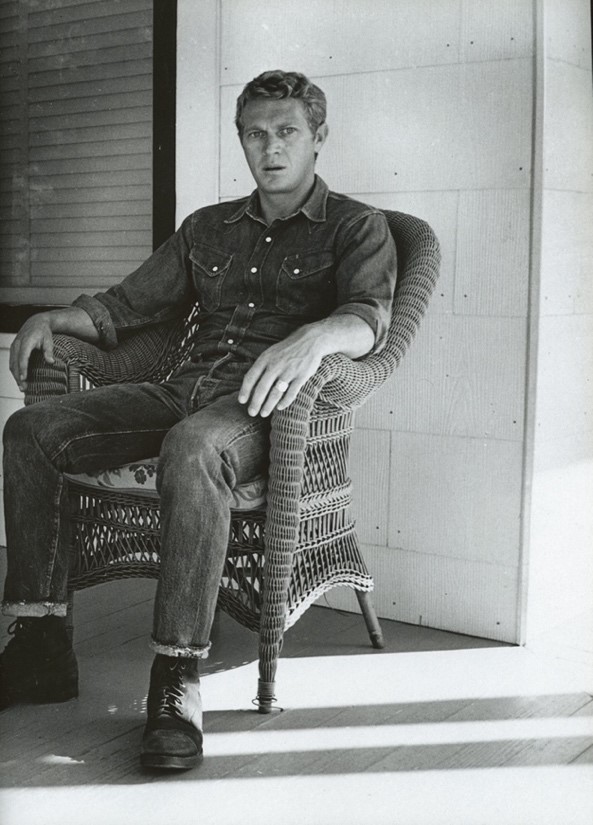
Look for snap fasteners down the front of the shirt and at the cuffs. Finally, check the yoke (the doubled fabric that covers the shoulders). If you see pointed yokes at the front and on the back of the shirt, you’re headed west. The classic western shirt is made of either denim or wool, but you’ll also find western details on flannels like the one pictured above.
Western Smile Pocket
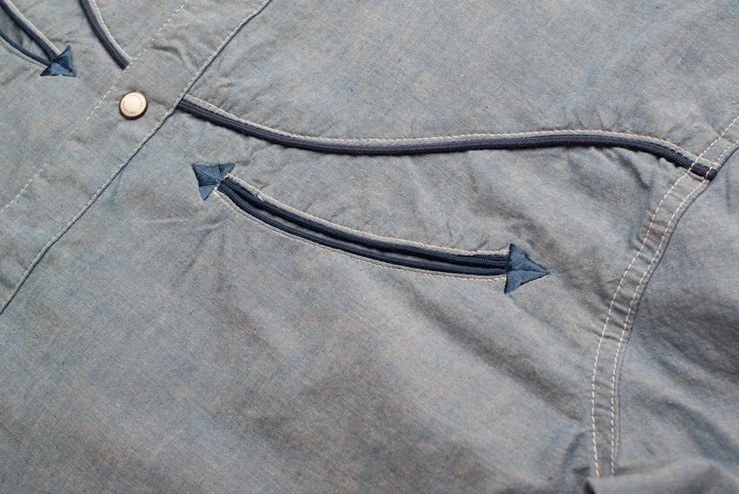
The smile pocket is an elaboration on the set-in pocket, which features a curved slash opening, usually with a concealed pocket bag, and embroidered arrow heads. Western tailors who outfitted rodeo stars and film stars in fancy duds made the design iconic in the first half of the twentieth century, when cowboy style was all about flash and panache. Smile pockets reached their zenith with singing cowboys like Gene Autry and Roy Rogers.
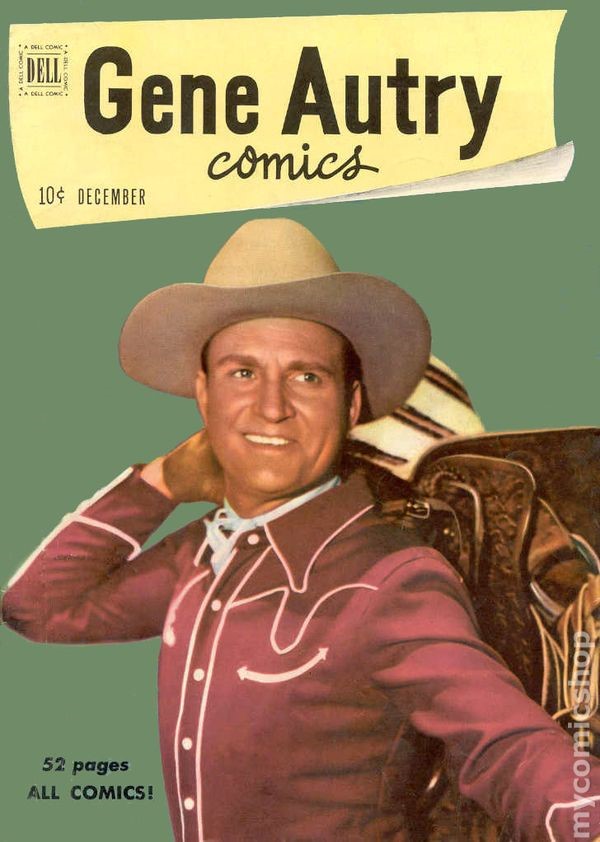
Unlike the snap-down pockets with pointed flaps, the smile pocket doesn’t cross sartorial boundaries. It’s as western as they come, and it will look dramatically out of place when removed from a western context. For those who love their boots dusty and their belt buckles big and shiny, this pocket will always leave them with a smile.
Sawtooth Pocket
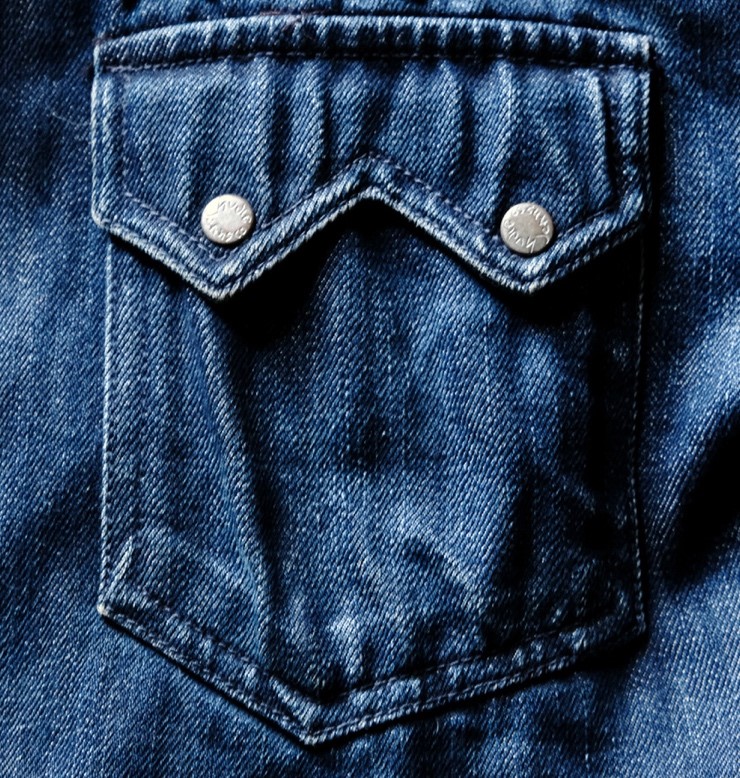
The sawtooth pocket is named for the distinctive shape of its snap-down flaps. With the flap’s two pronounced teeth, it looks like a close-up of a sawblade. The design was a characteristic feature in the western shirts of Jack A. Weil of Rockmount Ranch Wear, who was the first to make affordable snap-up western shirts, bringing flashy cowboy style to working cowboys. Weil is remembered today as the father of the western shirt, and you’ll still find his trademark sawtooth pocket on western shirts of all styles.
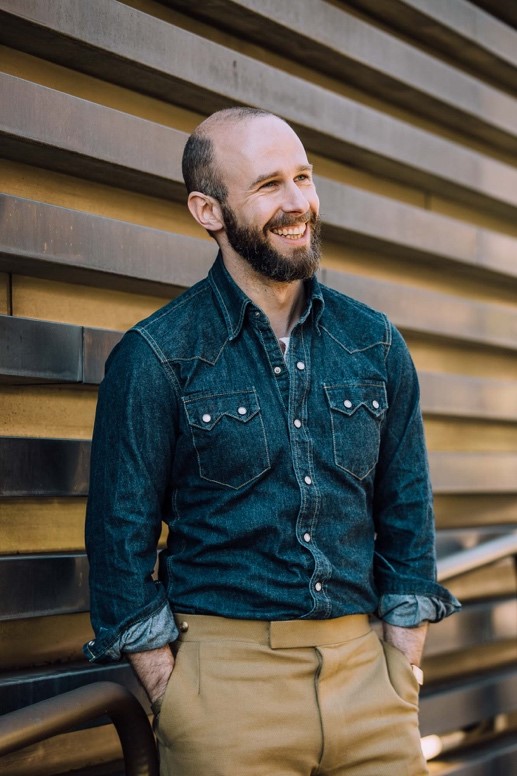
**Picture by Permanent Style** The sawtooth pocket crossed over into workwear when Levi’s picked it up and made it their own in the 1950s. Like its single-snap western cousin, it has made a comfortable home in nearly every denim-based style.
Safari Pocket
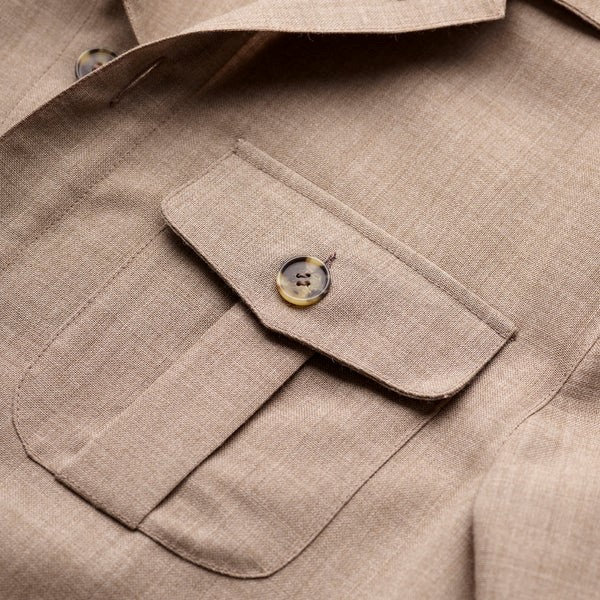
The safari pocket features a box pleat and a button-down flap. The flap can take many shapes. It might be a simple rectangle, or it might be pointed and curved into a gull shape. The pocket came from late-nineteenth-century military uniforms, but it got its name from the jackets that big game hunters wore while on safari on Africa early in the twentieth century.
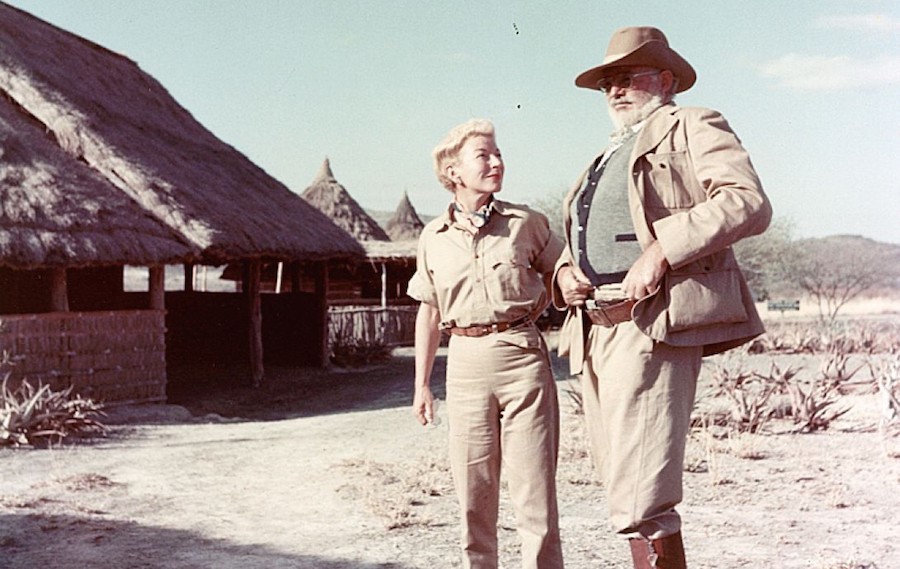
**Ernest and Mary Hemingway in safari suits** The safari pocket retains some traces of this adventuring spirit, and it is still a popular choice for travellers who leave the beaten path in search of thrills and new experiences. Originally intended to house spare cartridges, field glasses, or a gentleman’s pipe, the pockets are large enough to carry just about anything you can think of. For the modern adventurer, leave the gun and cartridges at home. Bring the camera instead.
Cepte Neler Var İkinci Kısım: İş kıyafeti Ceplerinin İçini Dışına Çıkarmak
Son yazımda beş cepli jeanin nasıl beş cepliye dönüştüğünden bahsetmiştim. O zaman da belirttiğim gibi erkek giysilerinde iç cep on yedinci yüzyılda ortaya çıktı. Bu cepler ceketlerin, yeleklerin ve pantolonların mümkün olan her yerinde bulunurken gömlek cepleri ise çok daha sonra yapıldı. Gömlek cepleri, gömleklerin erkek giyimi haline gelmesi sürecinden dolayı sonradan aramıza katıldı. Erkekler her zaman bir ceket ve çoğu zaman da bir yelek giydiğinden, yakalı gömlekler iç giyim sayılıyordu. "Gömlekli" bir adam kısmen (bazı bağlamlarda ise şaşırtıcı derecede) çıplak olarak görüldü. Profesyoneller ve aylak kitle için bu durum, erkeklerin ceketlerini toplum içinde çıkardıkları veya tamamen ceket kullanmayı bıraktıkları ve daha rahat hissetmeye başladıkları 1960'lara kadar böyle devam etti.
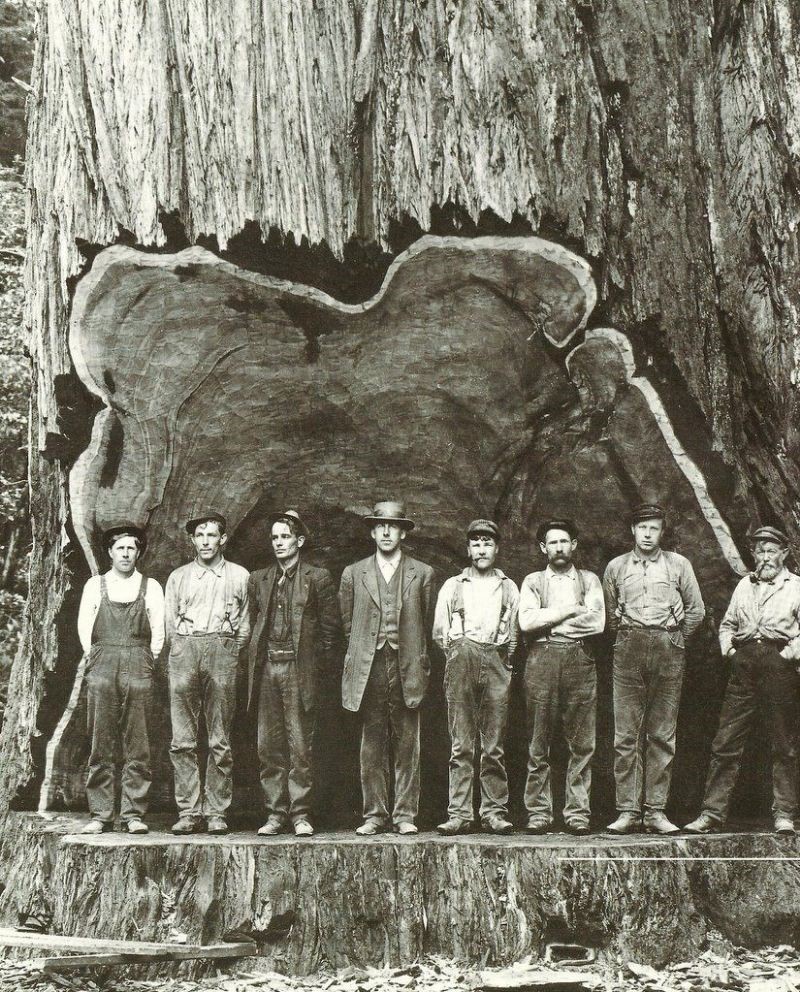
Çalışkan erkekler arasında ise ceket ve yeleğin sahip oldukları anlam çok daha önce kaybolmaya başladı. On dokuzuncu yüzyılda patiska ve pazen iş gömlekleri ön plandaydı. Eskiden ceket ve yeleklerde görülen kullanışlı cepler, iş gömleklerinin ön kısımlarında kullanılmaya başlandı. O zamandan beri, göğüs cebi gündelik düğmeli gömleklerin belirleyici bir özelliği haline geldi, ancak cep şekilleri arasında büyük bir fark vardır ve göğüs cebinde yapılan küçük bir değişiklik bir kıyafetin tüm havasını değiştirebilir. Bazı işaretleri nasıl okuyacağımızı öğrendikten sonra, belirli cep stillerine sahip gömleklerin neden bazı tarzlarla daha iyi uyum sağladığını anlayabiliriz. Hadi sekiz farklı cep stiline ve bu stillerin, gömlekler hakkında bize ne söylediklerine bakalım.
Yama Cep
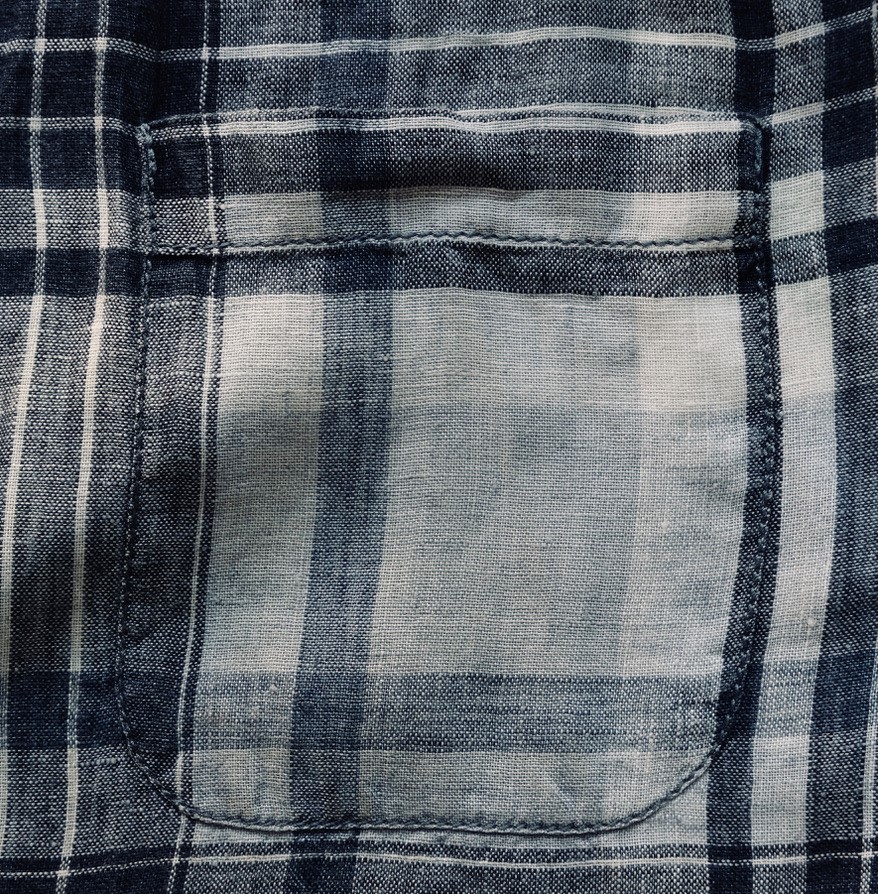
Ceketlerde yama cep, Tip 1 denim ceketler ve günlük kabanlar gibi eski iş kıyafetlerinin ortak özelliğidir. Gömleklerde ise en sade cep şekli aynı zamanda göğüs cebinin en şık halidir. Yama cep neredeyse görünmez olarak tasarlanmıştır. Gömleğin deseni varsa, cebin deseni gömleğin deseniyle tam olarak aynı hizada olmalıdır. Köşelerden güçlendirilmediği sürece yama cepler yırtılmaya meyillidir, bu da onu cep stilleri arasında en az dayanıklı olan yapmaktadır.
Ağzı Açık Düğmeli Cep
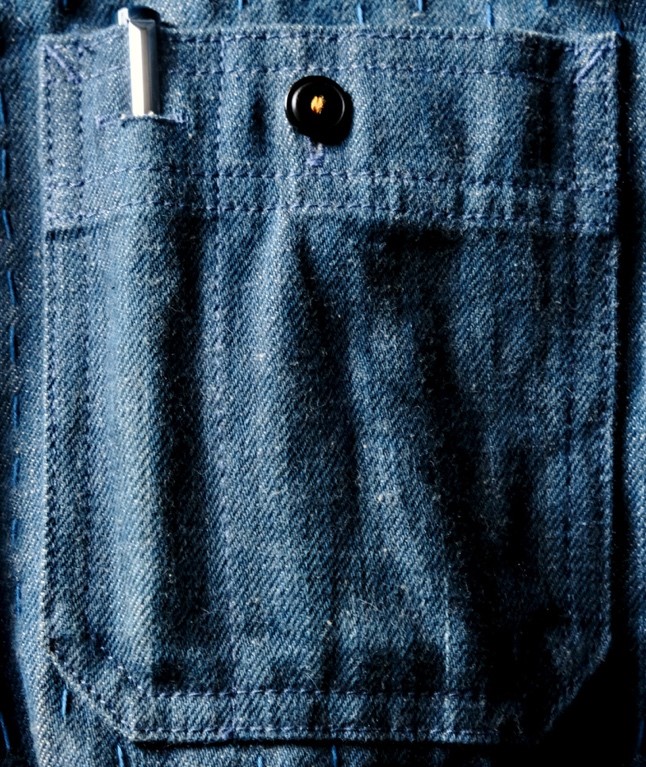
Küçük bir çıtçıtın eklenmesiyle, ağzı açık düğmeli cepli gömlekler daha çok gündelik giyim ve iş kıyafetleri alanına giriyor. Genellikle patiska ve denim iş gömleklerinde bulunan, bazen yukarıda resmedilen gibi bir kalem veya kurşun kalem yuvası detayıyla, düğmeli cep, modern parçalara nostaljik bir dokunuş katabilir.
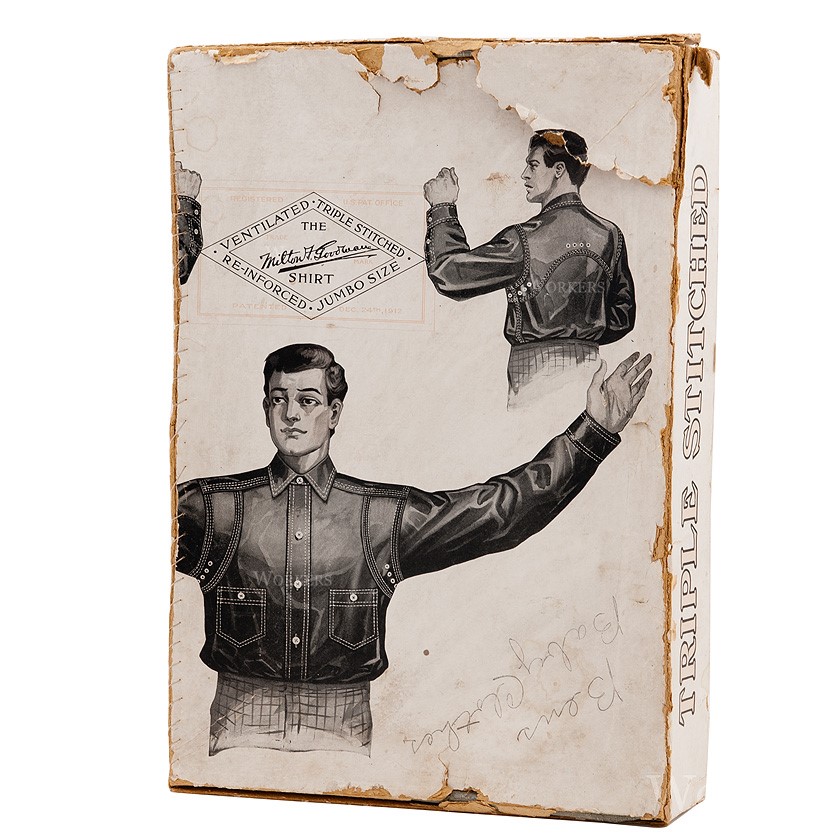
** Görsel The Rite Stuff'tan alınmıştır** Yirminci yüzyılın başlarında, bunun gibi cepler gömleğin çok daha aşağısındaydı. Yani göğse değil mideye yakındı. Bu çalışırken cebe ulaşmayı kolaylaştırıyordu, ancak tasarımcılar çok geçmeden ceplerin üst tarafta daha iyi göründüğünü fark etiller. Yıllar geçtikçe bu cepler yukarı doğru çıkarıldı ve yüzyılın ortalarına gelindiğinde göğsün üstüne hizalandı.
Düğmeli Kapaklı Cep
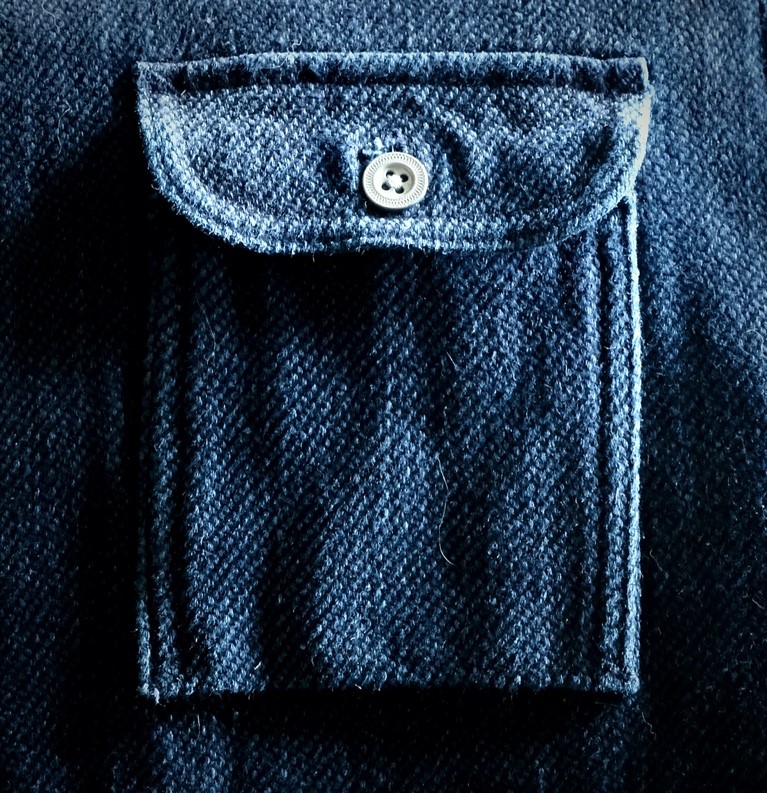
Açık düğmeli cepten daha güvenli olan düğmeli kapaklı cep, arkalarında ceplerinden dökülen eşyalar olmadan, askerler gibi karınları üzerinde emekleme hareketi yapmak isteyenler için mükemmeldir. Çıtçıt da kullanılabilir fakat istemediğiniz bir anda açılma ihtimalleri vardır. Bu düğmeli stil, ordular üniformalarını on dokuzuncu yüzyılda daha kullanışlı hale getirmeye başladıklarında rağbet görmeye başladı.
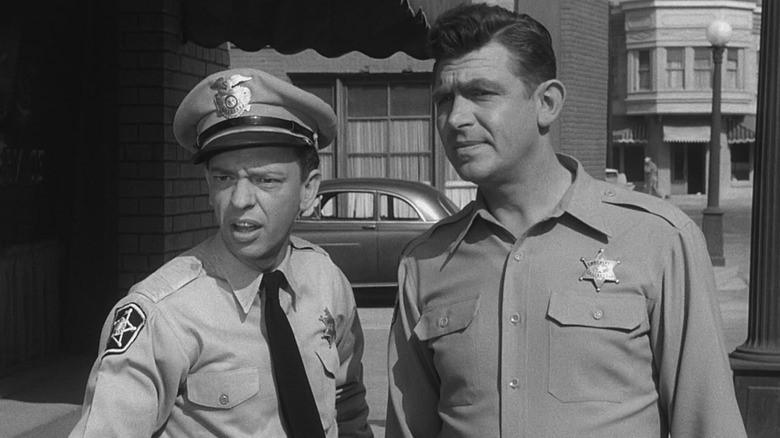
Düğmeli kapaklı cep, sade ve her şeye hazır bir gömlek isteyenler için hem dayanıklı hem de şık bir çözümdür. Kapaklar yuvarlak, dikdörtgen veya düz köşeli olabilir. Yukarıdaki gibi omuzlara apoletler eklendiğinde, ortaya çıkan gömlek bir teneke yıldızla mükemmel bir şekilde eşleşir.
Batılı Tarz Çıtçıtlı Kapaklı Cep
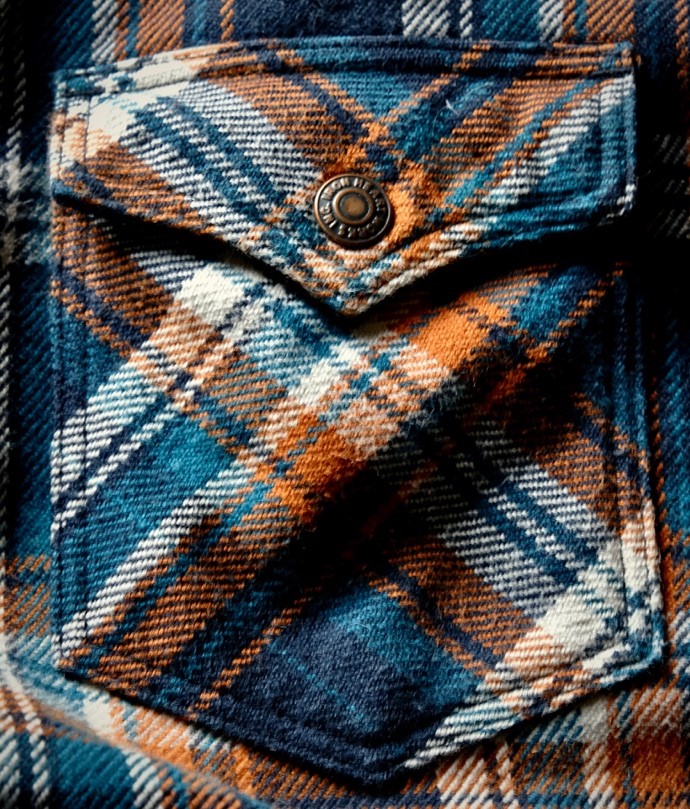
Sivri uçlu cep kapağı onun mutlaka batılı bir gömlek olduğu anlamına gelmez, ancak bu batıya doğru gittiğinizin işaretidir. Askeri üniformalarda ve iş kıyafeti gömleklerinde sivri uçlu cep kapağı yaygındır. Bu belirleyici işaretlerden biridir.
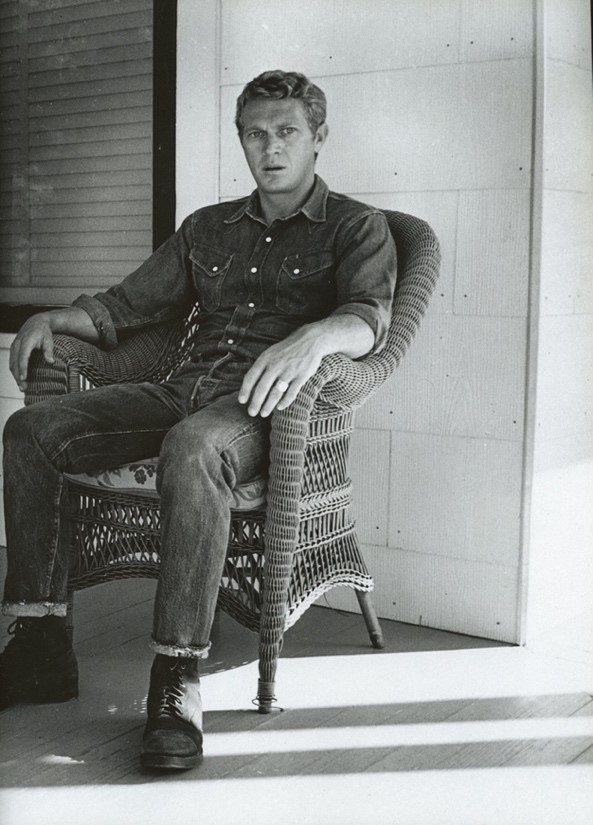
Gömleğin önünde ve manşetlerinde çıtçıtlara bakın. Son olarak, robayı (omuzları örten çift katlı kumaş) kontrol edin. Gömleğin önünde ve arkasında sivri uçlu robalar görüyorsanız, batılı tarz demektir. Klasik batılı tarz gömlek denim veya yünden yapılır, ancak yukarıda resmedilen gibi pazenlerde de batı detaylarını bulabilirsiniz.
Batılı Tarz Kavisli Cep (Smile Cep)
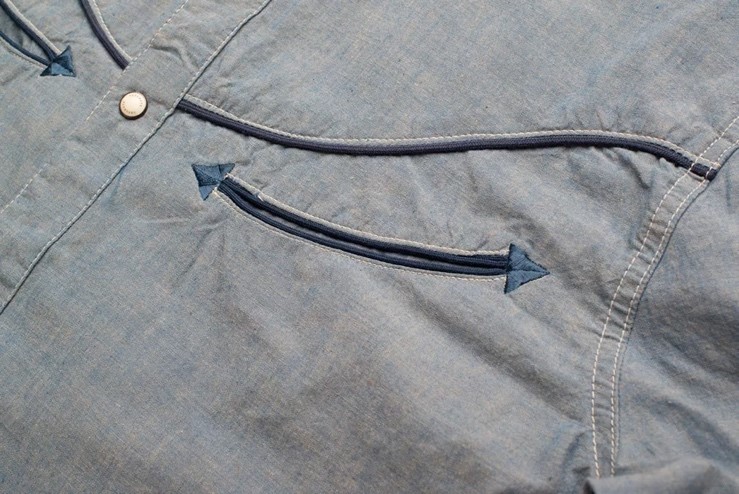
Kavisli cep, genellikle işlemeli ok başları ve kavisli eğik bir açıklığı olan gülümsemeyi andıran gizli bir cep detayıdır. Rodeo ve film yıldızlarına süslü giysiler tasarlayan Batılı terziler, kovboy stilinin tamamen gösteriş ve caka satmakla ilgili olduğu yirminci yüzyılın ilk yarısında bu tasarımı ikonikleştirdiler. Gene Autry ve Roy Rogers gibi şarkı söyleyen kovboylarla bu cep şekli zirveye ulaştı.
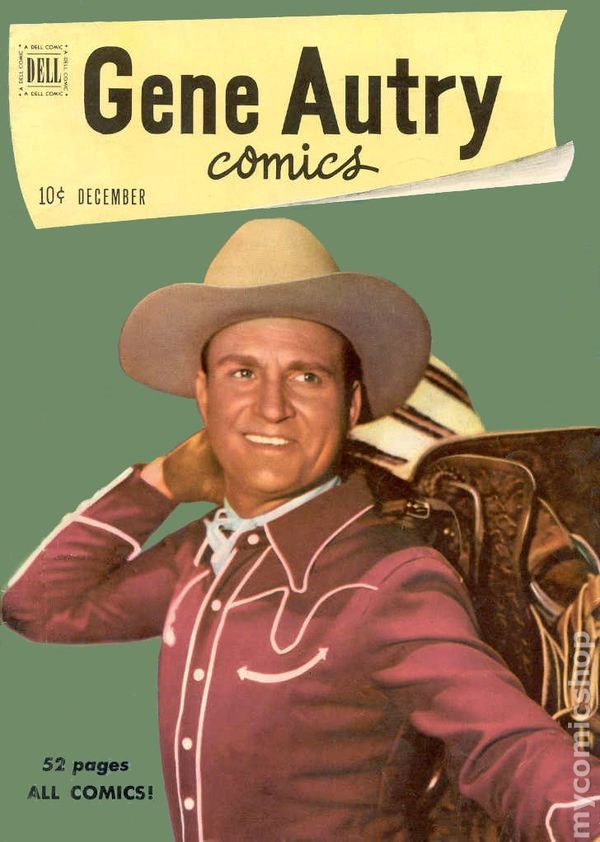
Kapaklı, çıtçıtlı, sivri uçlu ceplerin aksine, kavisli cep belirli terzilik sınırlarını geçemez. Batı tarzının özü olan bu cepler başka bir tarzda kullanıldıklarında tüm anlamını kaybeder. Bu cep botlarını tozlu, kemer tokalarını büyük ve parlak sevenleri daima gülümsetecek.
Sawtooth Cep
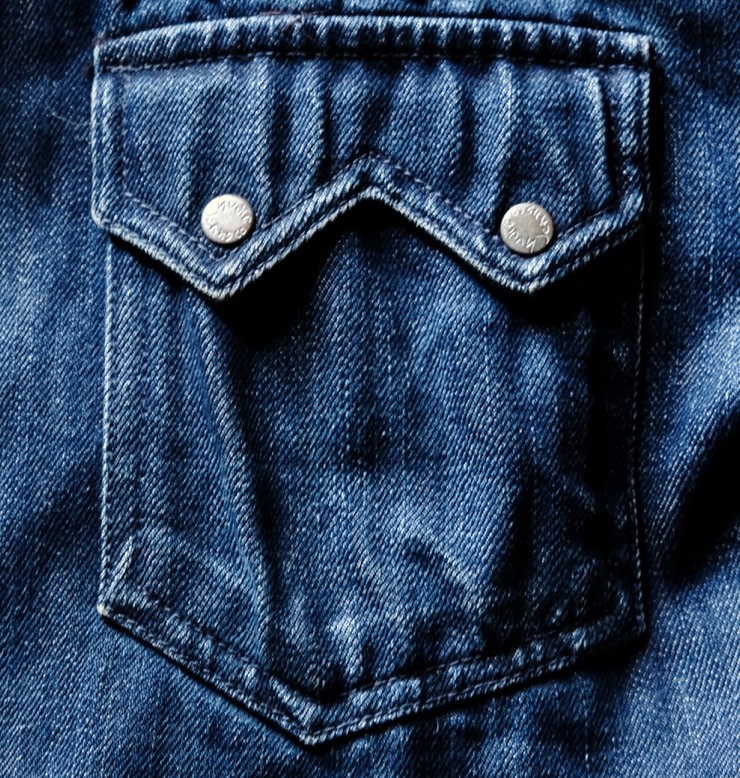
Sawtooth cep, cep kapaklarının ayırt edici şeklinden dolayı böyle adlandırılmıştır. Kapaktaki iki belirgin diş şekli, bir testere bıçağının dişleri gibi görünüyor. Bu tasarım, çalışan kovboylara gösterişli kovboy stili getiren uygun fiyatlı, çıtçıtlı batılı tarz gömlekler yapan ilk kişi Rockmount Ranch Wear'dan Jack A. Weil'in batı gömleklerinde kullandığı karakteristik bir özellikti. Günümüzde Weil batılı tarz gömleğin babası olarak anılıyor ve hala, batılı tarz gömleklerde onun ikonik sawtooth ceplerini görebilirsiniz.
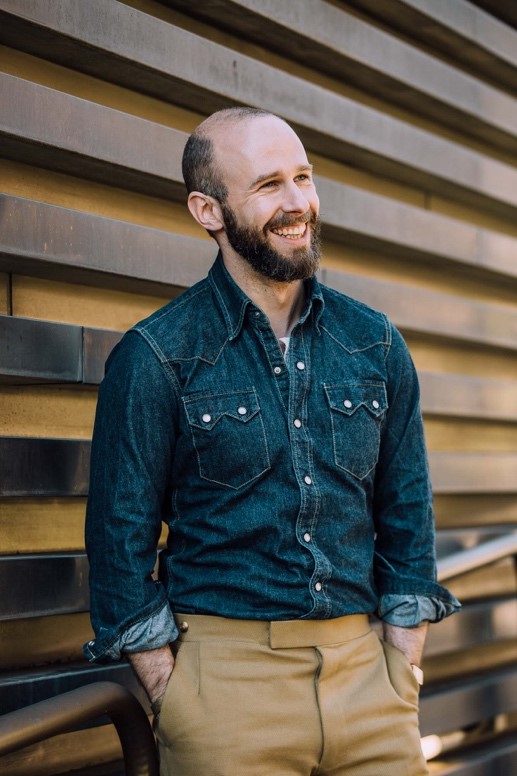
**Permanent Style tarafından çekilmiştir** Levi's onu 1950'lerde alıp kendi tarzıyla birleştirdiğinde sawtooth cep iş kıyafetlerinin bir parçası haline geldi. Tıpkı tek çıtçıtlı batılı kuzeni gibi, hemen hemen her denim yoğunluklu tarzda yerini aldı.
Safari Cep

Safari cebinde çift plise ve düğmeli bir kapak bulunur. Bu kapak birçok şekilde görülebilir. Basit bir dikdörtgen veya bir martıya benzer şekilde sivri ve kavisli olabilir. Cep on dokuzuncu yüzyılın sonlarındaki askeri üniformalarla birlikte kullanılmaya başlandı, ancak adını yirminci yüzyılın başlarında Afrika'da safaride büyük av avcılarının giydiği ceketlerden aldı.
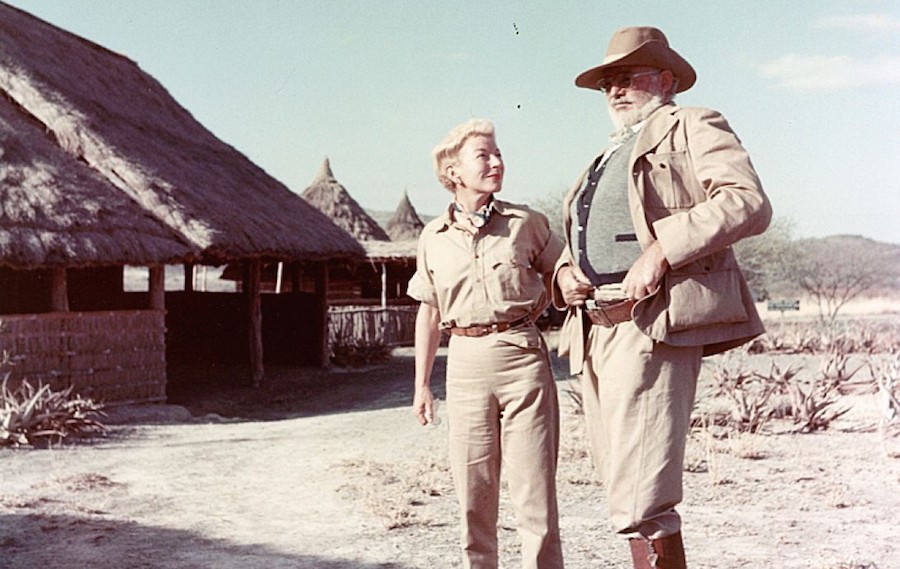
**Safari kıyafetleri içinde Ernest ve Mary Hemingway** Safari cep bu maceracı ruhun bazı izlerini barındırıyor. Ayrıca hala heyecan ve yeni deneyimler aramak için ana yoldan çıkan gezginler için popüler bir seçim. Orijinal tasarımında yedek kartuşları, dürbünleri veya bir beyefendinin piposunu barındırması amaçlanan cepler, aklınıza gelebilecek hemen hemen her şeyi taşıyabilecek kadar büyüktür. Modern maceracılar için söylemeliyim ki silahı ve fişekleri evde bırakın. Kameranızı kapın ve çıkın.
To view full content and a better mobile experience, try



